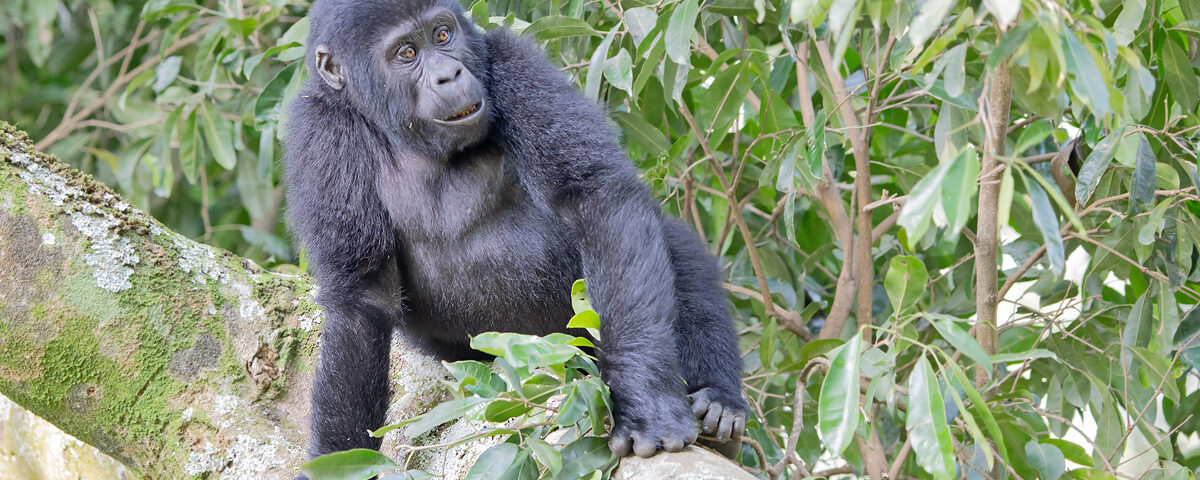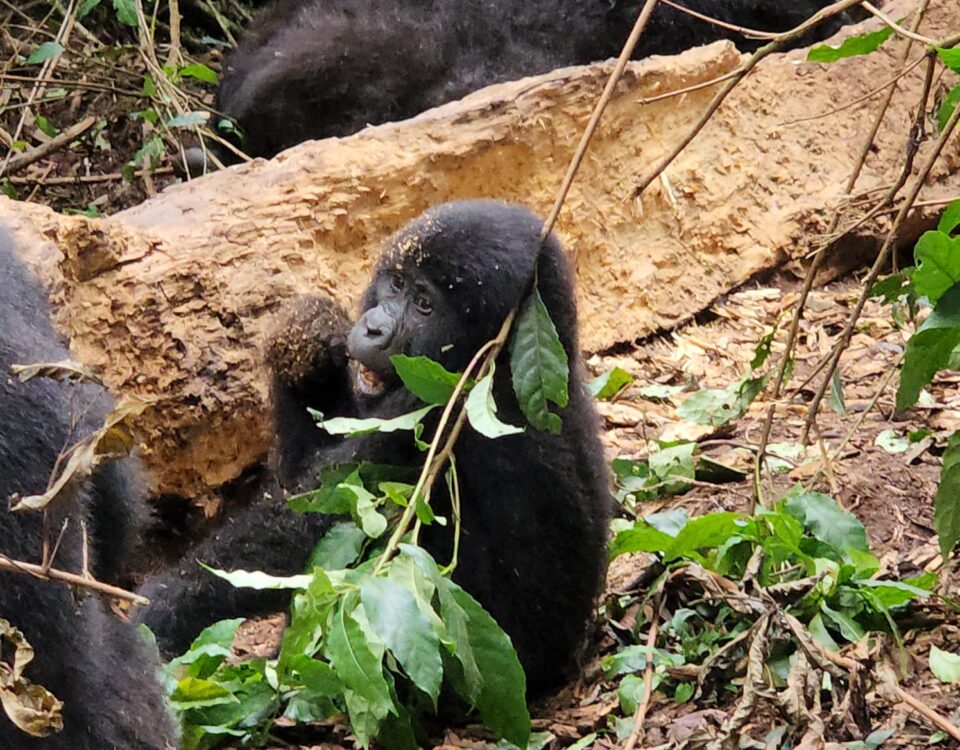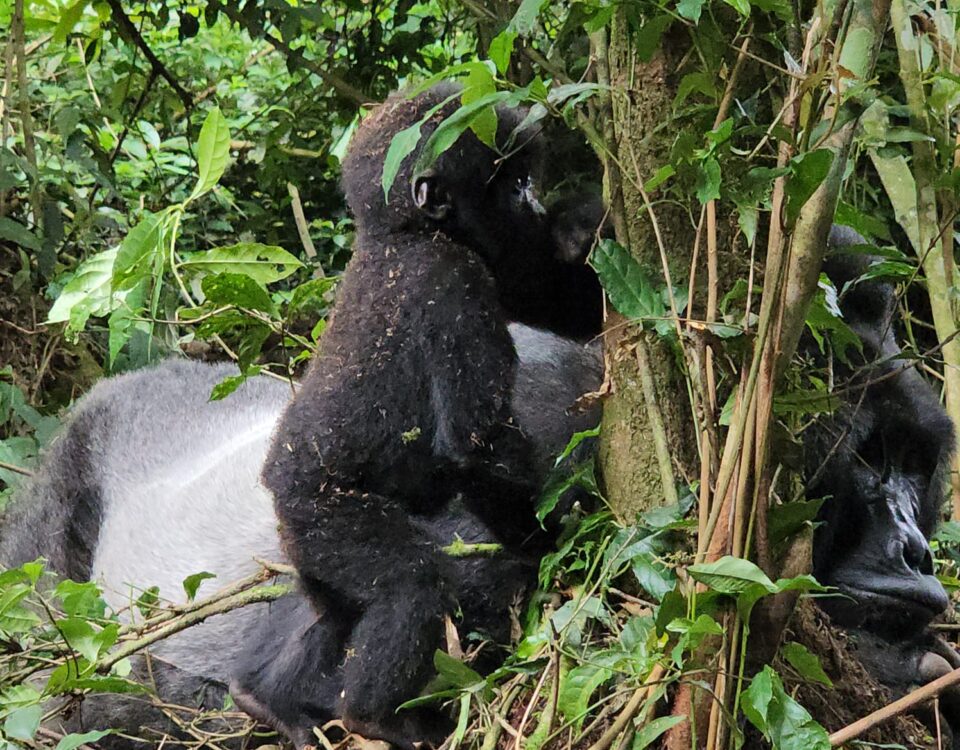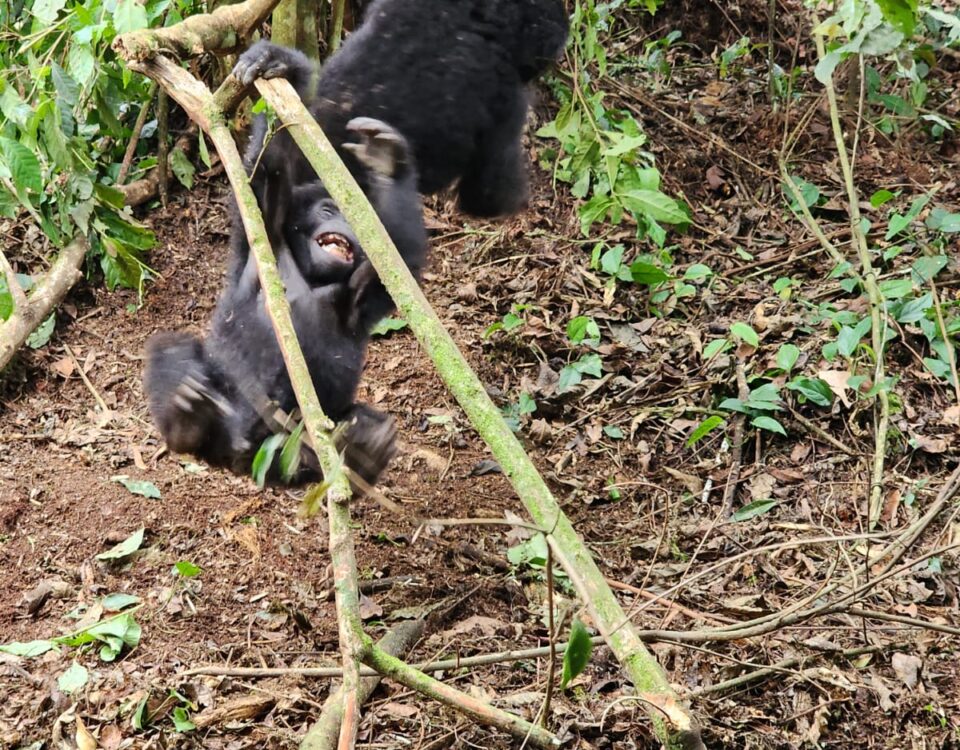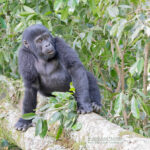
How Many Gorilla Families Can I Visit in Rwanda?
April 1, 2025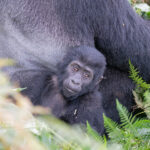
Can I See Baby Gorillas During the Trek?
April 1, 2025How Many Gorillas Are There in Rwanda?
How Many Gorillas Are There in Rwanda? Rwanda is home to one of the world’s most iconic and critically endangered species: the mountain gorilla. These gentle giants inhabit the lush, mist-covered forests of Volcanoes National Park, located in the northwest of the country, near the borders of Uganda and the Democratic Republic of Congo. The mountain gorilla population is incredibly special not only because of its rarity but also because of the concerted conservation efforts that have helped bring these magnificent creatures back from the brink of extinction.
One of the most common questions asked by visitors to Rwanda is, how many gorillas are there in Rwanda? This is a critical question, as the survival of mountain gorillas is closely tied to the health of their populations in the wild. Rwanda plays a crucial role in the conservation of these gorillas, and understanding how many gorillas inhabit the country helps shed light on the success of these conservation efforts. In this article, we will explore the current population of gorillas in Rwanda, the factors influencing their numbers, and how tourists can contribute to their protection through sustainable tourism practices.
Best Uganda Rwanda Safari Packages
Current Gorilla Population in Rwanda
As of the most recent estimates, there are approximately 604 mountain gorillas living in the wild, with about 1/3 of this population (around 320 individuals) residing in Rwanda’s Volcanoes National Park. The remaining mountain gorillas are found in the neighboring areas of Uganda’s Bwindi Impenetrable Forest and the Virunga National Park in the Democratic Republic of Congo.
This population is a significant recovery, considering that the number of mountain gorillas in the wild had dropped to a critically low level in the early 20th century. Thanks to decades of dedicated conservation work, such as anti-poaching efforts, habitat protection, and eco-tourism initiatives, the mountain gorilla population has been steadily growing.
A Growing Success: From Endangered to Vulnerable
Mountain gorillas were classified as critically endangered for many years due to threats such as poaching, habitat destruction, and disease transmission from humans. However, in 2018, the International Union for Conservation of Nature (IUCN) made the historic decision to upgrade the mountain gorilla’s conservation status from critically endangered to vulnerable. This change was a direct result of the impressive population recovery in both Rwanda and neighboring countries.
The increase in the mountain gorilla population is due to a combination of factors, including:
- Strict anti-poaching laws: The governments of Rwanda, Uganda, and the DRC have implemented stringent measures to protect gorillas from illegal hunting, poaching, and habitat destruction.
- Successful breeding programs: Gorillas in Volcanoes National Park, as well as in neighboring parks, have shown impressive breeding success, contributing to the growth of the population.
- Eco-tourism: Tourism has played a significant role in the protection of mountain gorillas. Trekking to see these animals in their natural habitat generates crucial revenue that goes toward conservation efforts.
This success story is a testament to the effectiveness of coordinated conservation strategies and the significant role that local communities, government agencies, and international organizations play in protecting these incredible creatures.
What Contributes to the Population Growth of Gorillas in Rwanda?
Several factors have contributed to the steady growth of the gorilla population in Rwanda, which is now considered one of the most successful wildlife conservation stories in Africa. Below are some of the key contributors:
- Habitat Protection and Management
Volcanoes National Park, where the majority of Rwanda’s mountain gorillas live, is an essential habitat for these animals. Over the years, the park’s management has been focused on preserving this critical ecosystem. The park rangers actively patrol the area, protecting it from illegal logging, poaching, and agricultural encroachment. By maintaining the gorillas’ habitat, the park ensures that they have enough food, shelter, and space to thrive.
- Anti-Poaching Measures
Poaching has long been one of the biggest threats to the survival of mountain gorillas. In the past, they were hunted for bushmeat, and young gorillas were sometimes captured and sold into illegal wildlife trade. However, with the establishment of stricter anti-poaching laws and the presence of armed park rangers, poaching incidents have been significantly reduced. These measures have greatly improved the chances of mountain gorillas surviving in the wild.
- Tourism and Community Involvement
Eco-tourism has been a crucial driver of gorilla conservation in Rwanda. The country’s Gorilla Trekking program allows tourists to visit these majestic animals in their natural habitat, contributing to local economies and supporting conservation efforts. The revenue generated from trekking permits, which can cost up to $1,500 per person, directly benefits the local communities and park management.
Moreover, local communities living near the national park are now deeply involved in conservation. Many local people work as porters, guides, and rangers, ensuring that the protection of the gorillas becomes a source of employment and economic benefit. This provides a powerful incentive for the community to protect the gorillas and their habitat.
- International Support and Collaboration
Rwanda’s gorilla conservation success is also the result of strong collaboration between national and international organizations. The Dian Fossey Gorilla Fund International and The World Wildlife Fund (WWF) have been at the forefront of funding and implementing conservation programs for over four decades. Their ongoing support for research, habitat protection, and education has been instrumental in helping to sustain the growth of the gorilla population.
Tracking Mountain Gorillas in Rwanda: How Many Are Accessible?
While there are approximately 320 mountain gorillas living in Rwanda’s Volcanoes National Park, not all of them are accessible to tourists. The Rwanda Development Board (RDB) has designated 10 habituated gorilla families for trekking. These families have been carefully trained to tolerate the presence of humans, and the trek to see them is a life-changing experience for many visitors.
The habituated families include famous groups like the Susa Family, Amahoro Family, and Kwitonda Family, among others. These families are spread across the park, and the difficulty of the trek depends on the location of each group. Some families are easier to access, while others require a more strenuous hike.
Each day, only 8 tourists are allowed to visit each family, ensuring minimal disruption to the gorillas and maintaining the quality of the experience. While you will likely not encounter every gorilla in the park, you will have the rare opportunity to spend time with one of the park’s protected families, watching them interact, feed, and play in their natural environment.
What Does the Future Hold for Rwanda’s Gorillas?
Despite the remarkable success in increasing the gorilla population, the species is still considered vulnerable. This means that there are still threats to their survival, including habitat loss, human-wildlife conflict, and diseases such as respiratory infections that can be transmitted by humans. The continued growth of Rwanda’s human population and the expansion of agriculture and infrastructure pose ongoing challenges to the conservation of the gorillas’ habitat.
However, there is hope. The continued success of conservation efforts, bolstered by eco-tourism, community involvement, and international support, has provided a solid foundation for the future. The fact that the gorilla population in Rwanda has increased steadily over the past few decades offers optimism for continued progress.
Conclusion: The Significance of Gorilla Conservation in Rwanda
As of now, there are about 320 mountain gorillas living in Rwanda, which is a significant portion of the global population. Thanks to robust conservation efforts, these gorillas are experiencing a population recovery that was once thought impossible. Rwanda’s commitment to protecting these incredible animals through habitat protection, anti-poaching measures, tourism, and community engagement has been essential to the survival of the species.
Visitors to Rwanda have the unique opportunity to see these magnificent creatures in the wild, contributing to their continued protection and supporting local communities. As eco-tourism continues to grow and conservation efforts are enhanced, the future of Rwanda’s mountain gorillas looks bright. Rwanda’s success story serves as a powerful example of how focused, collaborative conservation efforts can make a real difference in preserving wildlife for future generations.

